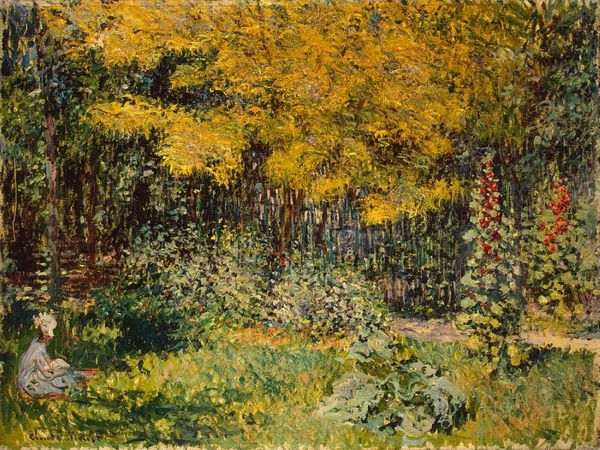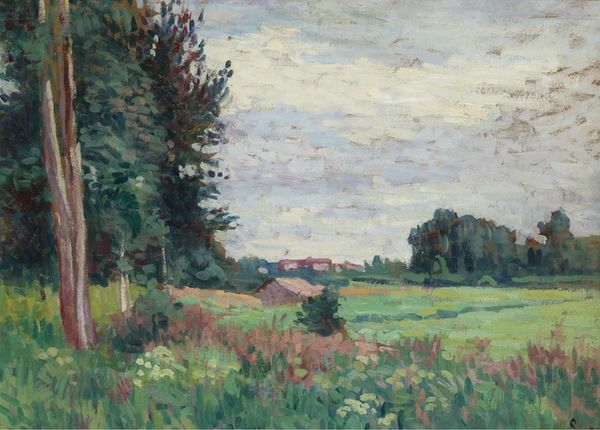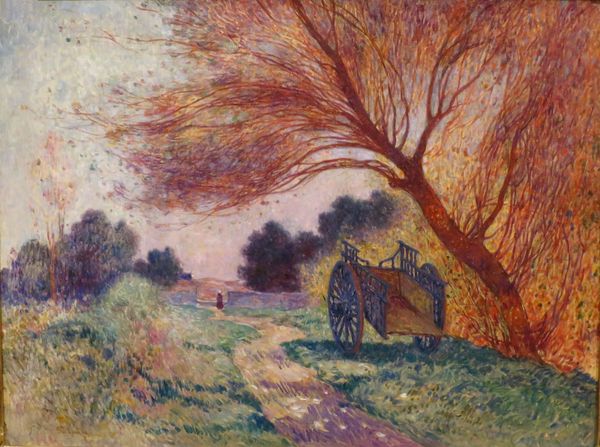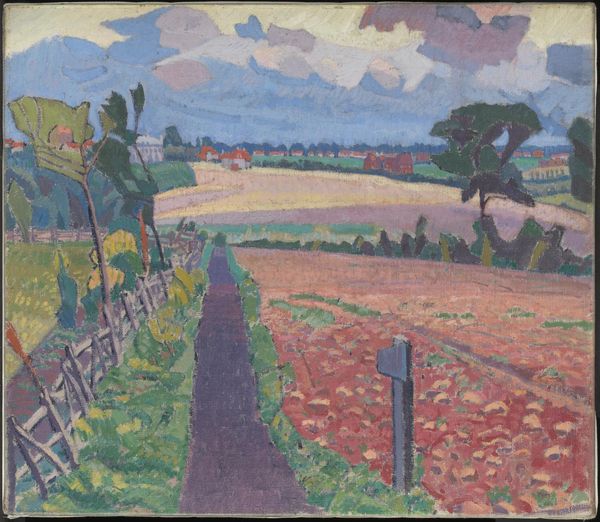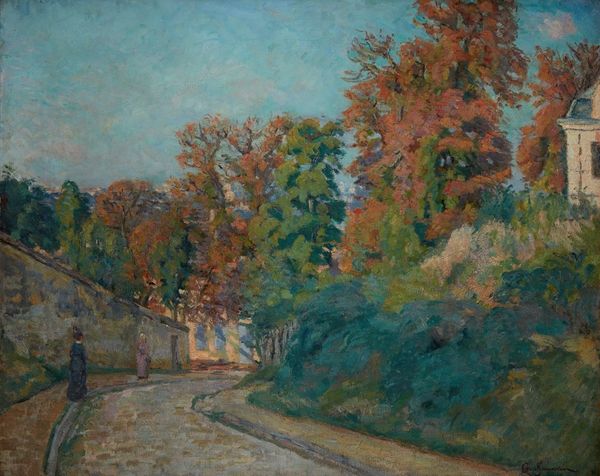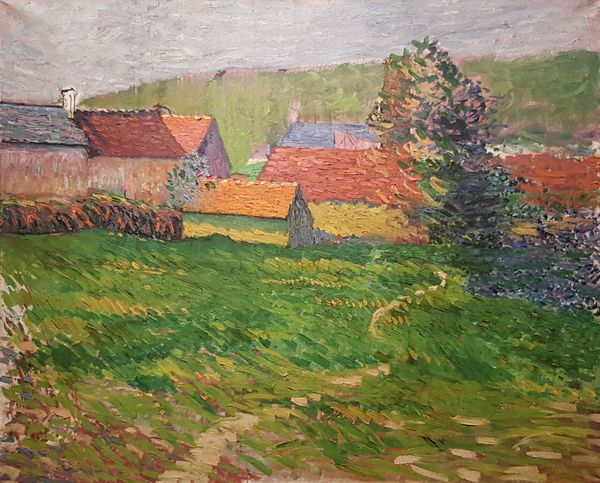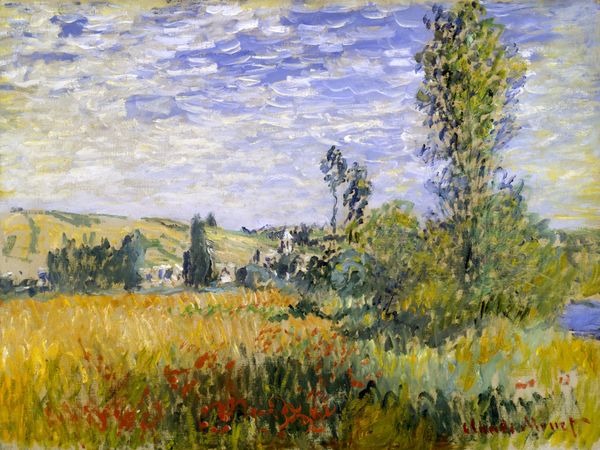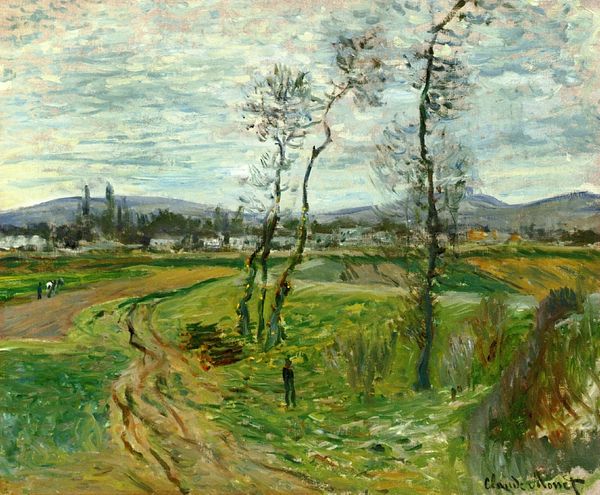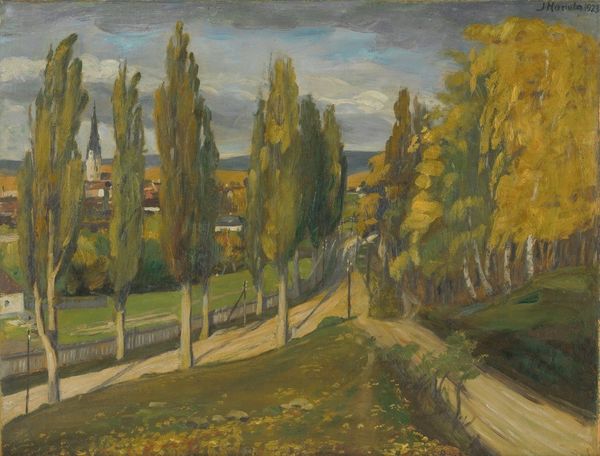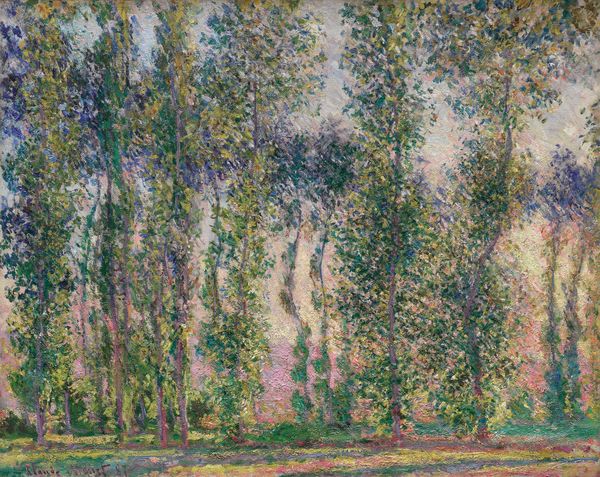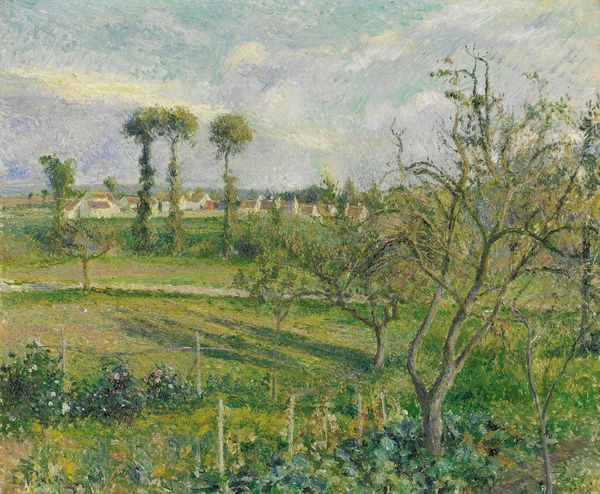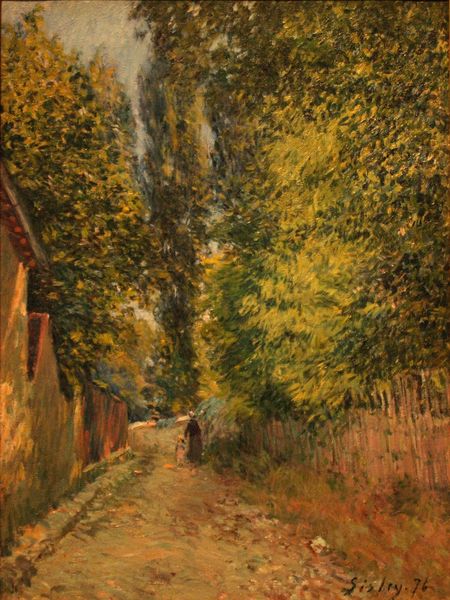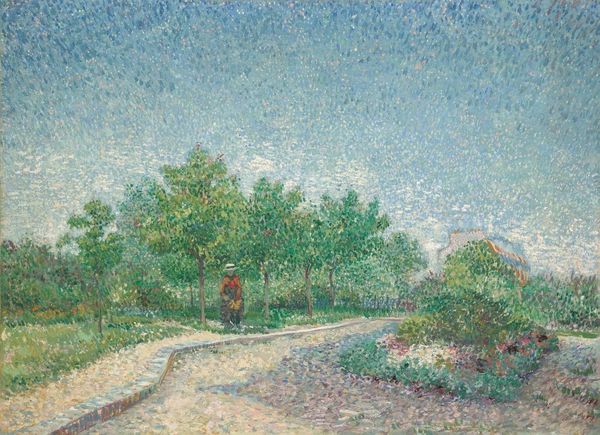
painting, plein-air, oil-paint, impasto
#
painting
#
plein-air
#
oil-paint
#
landscape
#
impressionist landscape
#
oil painting
#
impasto
#
post-impressionism
Copyright: Public domain
Editor: Here we have Léo Gausson's "Le Sentier sous les arbres", an oil painting, that brings to mind images of vibrant foliage. What strikes me is how the artist uses visible brushstrokes, particularly in the vegetation. What do you make of it? Curator: Indeed. The composition is intriguing. Note how Gausson manipulates the picture plane with a series of vertical tree trunks, almost like framing devices. These verticals serve to segment the canvas while also directing the eye towards the receding pathway. Consider also the impasto technique employed to render the leaves – does this tactile approach heighten your sense of depth and texture? Editor: I hadn't really noticed the framing effect of the trees, but I see it now. And yes, the impasto definitely adds a lot of texture, making it feel very lush and three-dimensional. Do you think that the varied brushstrokes also play a part in creating movement? Curator: Precisely. Gausson's brushwork operates almost independently, constructing a vibrant visual field through its own inherent energy. The eye dances across the canvas, animated by these independent strokes. What, then, becomes the subject: the path, the trees, or the materiality of paint itself? Editor: That's a really good question. I guess it is about the materiality of the paint itself – Gausson focuses our attention on that, making the medium just as important as what it depicts. I suppose the pleasure resides more in how the landscape is conveyed, rather than the landscape itself. Curator: A valuable insight! Considering the formal qualities, the artist compels us to prioritize surface over subject, emphasizing the inherent qualities of painting as a medium. This focus yields a uniquely self-aware artistic experience. Editor: I learned a lot about seeing the painting, not just looking at what's in it! Curator: And I am glad that this experience of seeing made us engage more with art history and art making.
Comments
No comments
Be the first to comment and join the conversation on the ultimate creative platform.
